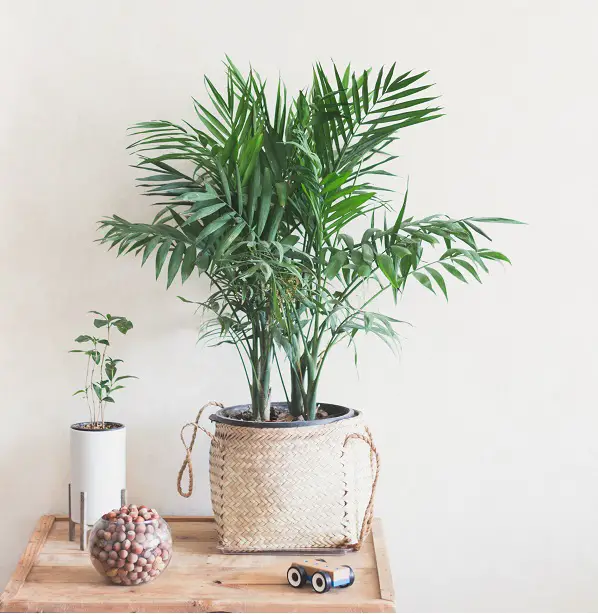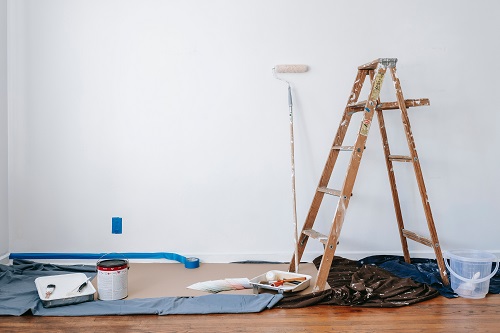Are Indoor Palms Toxic to Cats and Dogs? Check which Palms are harmful and which are not.
Who says you can’t be a pet lover and a plant enthusiast at the same time? Since juggling to manage a safe environment for both to co-exist is an art! We just can’t trouble proof our pet’s minds but we can surely control one thing and that is the toxicity of the plants that we choose to keep indoors.
As to what goes in a pet’s mind, is a mystery we will never be able to solve and when mischief crosses their mind, there is no denying that some topsy turvy business is on the way. They need something to play with and a slight movement of your palm leaves from a whiff of air can intrigue their playfulness. And the rest is history.
Indoor palms are the best plants to keep in your home as they seem to epitomize serenity. Even if we see the interior design magazines, palms are the most endorsed plants for the interiors this year. The point is before you get a plant for your interior, you need to have a thorough understanding of which palms are good and healthy for not only you but everyone in your home.
Browse through this guide on how to buy an indoor fountain that will create a relaxing environment in your home.

So, even if you don’t have pets but do have small kids and crawling babies at home, this guide is for you. Read on to get familiar with the non-toxic palms out there to create a safe and livable environment for you and your precious pets!
Popular Non-Toxic Palms
Palms are generally known to be the most pet-friendly plants out there. Well, almost! And when we say friendly, we actually mean friendly in every possible way. Their thin leafy structure is very inviting for bored pets. Not only the looks but the taste is also grass-like. The stringy structured leaf might seem the same to your pets but definitely not to you because not every stringy plant is a palm and some are very toxic.
The Parlor/Bamboo Palm
The parlor palm, also known as bamboo palm, is considered to be the miniature version of the majesty palm and is native to southern Mexico’s rainforests. It is a complete pet and child-safe plant that can be kept indoors for beautification and air purity. This tall and elegant plant can grow in indirect sunlight and even shadier spots, making it ideal for maintaining indoors.
Fact: Parlor palms, in addition to being non-toxic, have the ability to absorb ammonia from the surrounding air. So say bye-bye to kitty litter smell or other bad odors.

The Majesty Palm
Majesty or majestic is a gorgeous and low-maintenance palm that is super friendly for pets also. They are originally from Madagascar and can reach heights of up to 90 feet. A completely non-toxic palm for pets, majesty palm is one of the most popular palms for your indoors. Not a single part of the plant is harmful to cats and dogs. It has no thorns that can harm your pet if they get in a playful mood with the plant. Since your pets are definitely safe from eating it or rubbing themselves against it, the only thing that you should be worried about while having a pet around majesty palm is the well-being of the palm itself.
Fun Fact: If you want your cat to stay away from your plant, try putting some fresh peels of any citrus fruit in the soil of your plant as cats hate citrus smells.

The Ponytail Palm
A ponytail palm is a very adaptable palm that is great for keeping indoors. It can adjust from bright to medium light easily. Some consider it to belong to the succulent family rather than a palm. It is considered to have originated from east Mexico. According to ASPCA, ponytail Palm is non-toxic and safe for your cats and dogs. The leaves, the trunk, and the stem, every part of the ponytail palm are safe for any living being interaction. On a lighter note, the cascading leaves of ponytail palms can intrigue the curiosity of a cat.

If you are into artificial plants, check out this article on how to use faux palm trees for indoor and outdoor decor.
Areca Palm
Areca palm, also known as butterfly palm, is a fast-growing bamboo-like palm with a profuse amount of foliage that could eventually grow to around two meters indoors. Gorgeously giving your indoors a tropical feel and at the same time being completely safe for small children and pets. Definitely, a recommended palm for indoors which is easily available in the local plant market.

Fact: It is very important to keep in mind that plants may cause vomiting and gastro issues in pets whether they are non-toxic or not. Even non-toxic plants with larger leaves can be a hazard to their health. Please reach out to emergency if you feel that your pet has ingested a plant or any toxic substance.
Which Parts of a Palm Tree Are Toxic to Pets?
Sago palm, which is a common indoor plant, is found to be one of the most toxic palms. From its leaves to its branch or stalk, everything is poisonous and will be a hazard to the life of a curious pet or a child if kept indoors. But the most poisonous part of this palm is its seeds and fruit which can be life-taking as well. Technically speaking, it is not even a palm tree. All parts of these palms contain a toxin that works its way in just fifteen minutes after taking it in.

Other than Sago palm, Queen Sago, the fishtail palm, the Formosa palm are considered very toxic. Cardboard palm, due to its beauty and size, is sometimes preferred for the indoors which has deadly red seeds. Mostly the fruit of these plants contains the most toxins that may cause severe allergic reactions to the skin as well. Yucca and dracaenas plants have a similar appearance as the palms. But don’t be fooled by appearances as they are very toxic for animals and humans.
If you want your palm to grow well, read this article to learn how to pick a planter for your plant.
Symptoms of Palm Poisoning
You must be very vigilant if you have a Sago Palm in your house. If your pet becomes ill as a result of this indigestion, keep the following symptoms in mind:
● Vomiting
● Seizures
● Diarrhea
● Bloody stool
● Jaundice (yellowing of eyes and skin)
● Severe liver failure (resulting in death if not dealt with timely)
Precautionary Measures
Since the sago palm is one of the most popular indoor palms and is readily available in local nurseries, a few precautions should be taken if you wish to keep one!
● Dispose of the fallen leaves and seeds as soon as possible.
● If you are a pet parent and still you prefer to keep that palm in your home, then the plant should be placed at a very clever spot where it cannot be reached.
● The garbage bags where the leaves and seeds are disposed of should be sealed properly and put away at a place that is out of reach for your pet.
You have thousands of things to worry about but your furry friend (a.k.a your pet) biting into a toxic plant shouldn’t be one of them. So create an environment in your house that is relaxing, stress-free, and free from toxins!



